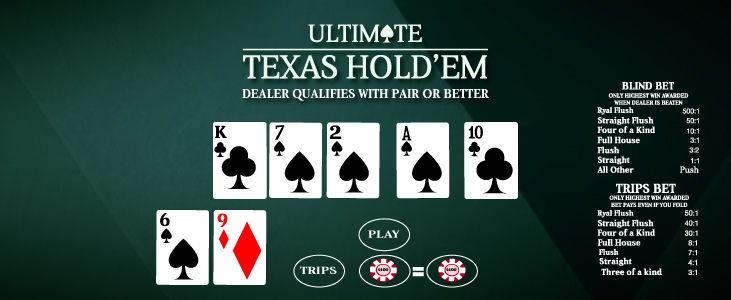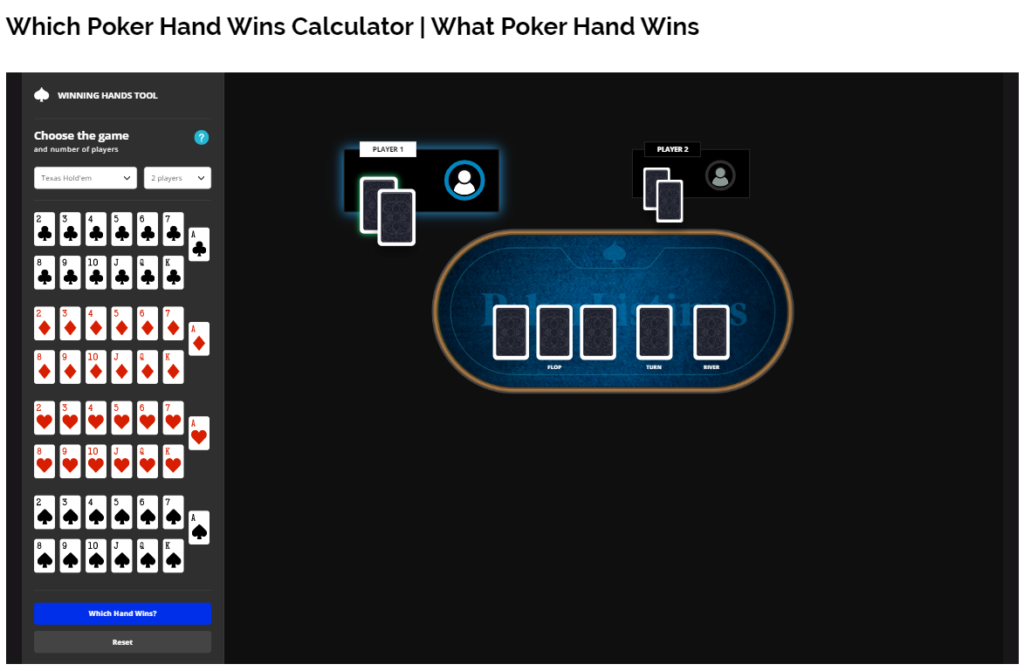7 Card Texas Holdem
Download this game from Microsoft Store for Windows 10, Windows 8.1. See screenshots, read the latest customer reviews, and compare ratings for Texas hold'em Poker Plus. All Texas Hold’em starting hands can be separated into two categories: “suited” and “offsuit”. Suited hands contain two cards of the same suit, like J♣9♣, A ♥ K ♥, K♠Q♠ and 9 ♦ 3 ♦. All other starting hands are in the offsuit category, like A♠8 ♦, 7♣5 ♥ and K ♥ 9 ♦. This fantastic Poker Room was founded by Poker Pro Tony Guoga, aka Tony G. Tony G Poker currently offer Texas Hold 'em, Omaha, Omaha Hi-Lo, 7-Card Stud and 5-Card Stud. #1 Party Poker v.1.2.82 Playing live multi-player poker at PartyPoker.com is fun and easy! Texas Hold'em, Omaha, Omaha Hi/Lo, 7 Card Stud, 7 Card Stud Hi/Lo. Many many daily.
OBJECTIVE: To become a winner you should make up the highest possible poker hand of five cards, using the two initially dealt cards and the five community cards.
NUMBER OF PLAYERS: 2-10 players
NUMBER OF CARDS: 52- deck cards
RANK OF CARDS: A-K-Q-J-10-9-8-7-6-5-4-3-2
THE DEAL: Every player is dealt two cards face down which is commonly called ‘hole cards’.
TYPE OF GAME: Casino
AUDIENCE: Adults
Introduction to Texas Hold ‘Em
Free 7 Card Texas Hold'em Poker
How to Play
First Round Betting: The Pre-Flop
Free 7 Card Texas Holdem Poker
Second Round Betting: The Flop
Third & Fourth Round Betting: The Turn & The River
Ties
Pairs– if two players are tied for highest pairs a “kicker” or the next highest-ranking card is used to determine the winner. You continue until one player has a higher-ranking card or both are determined to have the same exact hand, in which case the pot is split.
Two pairs– in this tie, the higher ranked pair wins, if top pairs are equal in rank you move to the next pair, then move to kickers if necessary.

Three of a kind – higher ranking card takes the pot.
Straights – the straight with the highest-ranking card wins; if both straights are the same the pot is split.
Flush – The flush with the highest-ranking card wins, if the same you move to the next card till a winner is found or hands are the same. If hands are the same split the pot.
Full house – the hand with the higher ranking three cards wins.
Four of a kind – the higher ranking set of four wins.
Straight flush – ties are broken the same as a regular straight.
Royal Flush – split the pot.
Hand Ranking


Seven card stud (also referred to as 7 card stud) is similar to Texas hold’em in so far as you use your best five cards out of a total of seven to make your best poker hand. All the hand values remain the same, as it is still poker. However, it is not a board game like hold’em that has common cards that everyone can use. Each player receives his own seven cards that are not shared. While hold’em is often a game of high cards, seven card stud is a game of live cards – so remember to keep an eye on what’s been mucked and commit this information to memory.
Please note: this lesson assumes that you already know the rules of poker and are familiar with how to play Texas hold’em – including an understanding of poker hand rankings and other basic concepts.
The Setup and Initial Deal
The typical setup of 7-card stud is as follows:
- A full table seats a maximum of 8 players
- It is played using a fixed-limit betting structure
- Everyone posts an ante to begin (blinds are not used)
- The initial deal consists of two private cards and one up card
An example of a seven-card stud game, when the antes are posted:
Seven-card stud can be played for all sorts of stakes. A $2/$4 game would generally have a $0.25 ante – and this gives the players something to shoot for right from the start.
The Bring In
The lowest face up card is forced to ‘bring it in’ meaning they are obligated to make a bet. The forced bet in a fixed-limit game is generally lower than the small bet. For example, in a $2/$4 game the forced bring in would usually be $1.
If two or more players share the lowest ranked card then suits are used to determine which card is lowest. From highest to lowest, suits are ranked as follows; spades, hearts, diamonds and clubs. The lowest card in the deck is therefore the . If that card appears as one’s up card, which is called your door card, that player is forced to make a bet.
The Betting Rounds
There are five betting rounds in seven card stud versus only four in hold’em. After the bring in has been posted the action moves clockwise around the table. Players can call the initial bet, raise, or fold. When an opponent folds his cards are mucked, including their door card. Remember the exposed cards – as you may need one of that suit or rank later in the hand.
After this initial round of betting, called third street, each poker player who is still in is dealt another face up card called fourth street:
At this juncture another major difference between hold’em and seven card stud emerges. In hold’em the positional considerations stay the same throughout the hand. Beginning on fourth street the action starts with whomever has the highest board whether that be the highest card or a pair. if a player has an exposed pair showing on fourth street then they may be at the higher limit at this stage.
There is a round of betting and then another up card is dealt to each live player, called fifth street:
On fifth street the betting limit doubles. In a $2/$4 game, the minimum bet would be $4. Another betting round ensues and the sixth street card, which is the final up card for all to see, is dealt:
After another round of betting the final card, seventh street, or the river, is dealt:
The final card is dealt face down giving each active player a total of three down/private cards and four up cards for all to see. A final round of betting ensues and then the showdown.
As you can imagine there are many surprises at the river in seven card stud. This nuance of the game should alert the astute reader that your opponent’s betting patterns may well be worthy of more scrutiny than in hold’em.
Strategic Considerations
Hand reading becomes much more of an art in seven card stud than in hold’em since each player ends up with three private cards. In our example the player could be have A-T and have a straight. It’s also possible that a player could actually hold a full house or quads (four of a kind) without a pair showing.
The value of live cards is the main reason seven card stud is a more difficult game to master. In hold’em the board is always there to refer to as are your two hole cards. In seven card stud when an opponent folds his cards you need to remember them as you may need one of that suit or rank later in the hand. This concept of “live cards” is critical to playing stud well.
Related Lessons
By Tom 'TIME' Leonard
Tom has been writing about poker since 1994 and has played across the USA for over 40 years, playing every game in almost every card room in Atlantic City, California and Las Vegas.